Ninja Gaiden 4 is a pretty interesting twist for the franchise. A longtime competitor in the "character-action" genre, Team Ninja's Ninja Gaiden was a rival to Capcom's Devil May Cry and Platinum Games' selection of titles. That makes Ninja Gaiden 4 interesting, since it's Platinum's attempt to take on a franchise that had already made a name in the same genre. The result is a game that is more Platinum than Team Ninja, but it's still a fun, if flawed, action game.
Ninja Gaiden 4 is set years after the previous games in the series. The corrupted Dark Dragon was defeated and sealed away by legendary super ninja Ryu Hayabusa, but its locked-away corpse lives over the ruined Tokyo, leaving the city trapped beneath an endless rain of blood. Yakumo, a member of the Raven Clan of ninjas, infiltrates the city to find and kill Seori, the priestess of the Dark Dragon, and rescue the city. Upon meeting Seori, he learns that they must break the seals on the dragon before killing it, so Yakumo and Seori team up to do just that.
Ninja Gaiden 4's plot is forgettable, but Ninja Gaiden isn't really a game you play for the story, so this is a minor complaint. Yakumo barely has a personality, and he and Ryu feel like interchangeable characters. There's a variety of side characters, but most of them are forgettable, up to and including the villains of the story, who lack the slightest personality. The only bright spot is Seori, a charming-if-snarky character who brings a much-needed energy to what is otherwise a dry-as-dust script.
For better or worse, Ninja Gaiden 4 is more of a Platinum game than a Team Ninja game. While a lot of the iconic Ninja Gaiden mechanics are present, the execution, combat flow, and general feel of the game are more in line with a Platinum title. For me, this isn't necessarily a criticism. I love Platinum Games and Team Ninja titles, but I think it's important to set proper expectations. It's far closer to a raw character action game than the blend of fighting game and beat-'em-up that I associate with the older games.
On the surface, the game plays a lot like older Ninja Gaiden titles. Yakumo has the same basic skill sets as Ryu Hayabusa did. You have quick and heavy attacks; the ability to block, dodge and parry attacks; a host of different combos and moves, and the ability to Izuna Drop the heck out of foes. Almost all of the core mechanics are in play, right down to the ability to charge powerful Ultimate Attacks by absorbing orbs dropped by defeated enemies. A lot of the basic attacks and moves feel incredibly familiar, but within context, they play quite differently for a variety of reasons.
Coming back from Ninja Gaiden 2 is the Obliterate system. When attacking enemies, you have the potential to cut off a limb. Once an enemy has been delimbed, they become weakened in some fashion, but they also gain access to deadly desperation attacks that can do a ton of damage. In exchange, you can, by pressing Y near a weakened enemy, instantly defeat them with an Obliteration attack. It's a neat system that rewards you for thinking carefully about what enemies you approach and what attacks you use on them, but mostly, it adds more of a cinematic edge to combat.
The biggest mechanic in Ninja Gaiden 4 is the Bloodraven mode. This is an evolution of the "Devil Trigger" mechanic found in other character action games. You have a Ki bar that you build up by fighting and taking damage. At any point, you can hold down the left shoulder button to activate Bloodraven mode, transforming Yakumo's looks and increasing his damage. Attacking while in this mode uses up some of the Ki bar, and without energy, you can't transform.
What makes Bloodraven intriguing is that you're weaving it more naturally into combat by swapping in and out of Bloodraven. There's a couple of reasons for this. One is that all of Yakumo's weapons change forms when in Bloodraven. His starting weapon is a pair of katanas, but while transformed, they become a single extremely large sword that can be charged up for powerful attacks. His second is a thin, umbrella-like rapier that becomes a deadly drill-tipped lance, and so forth. In essence, each weapon has two move sets, and swapping between them offers the ability to perform powerful combos. My favorite is Yakumo's fourth weapon, a literal bag of tricks including explosives, shurikens and flails, which he modifies by growing a pair of robot arms that let him quad-wield for even more absurdity.
The other big element of Bloodraven mode is that it is one of your most effective methods of both offense and defense. While in Bloodraven mode, you'll break through enemy guards instantly, damaging and stunning them, so it's easier to extend your combos. At the same time, enemies have powerful unblockable attacks, signified by a red exclamation point icon. If you hit them with any Bloodraven attack while they are prepping, you'll stop the attack, stun them, and leave them open for further combos. As the game progresses, you gain the ability to do special Bloodraven-infused parries and counterattacks, which only further reward you for staying in the enemy's face.
Aggression is arguably the best defense in the game. While it's important to know when to block and dodge, it's even more important to know when to counter enemies. You need to balance spending the precious Bloodraven meter with the raw benefit you get from using it to throw enemies off balance and smash them to pieces. It almost reminds me more of Metal Gear Rising than Ninja Gaiden. You're rewarded for being constantly on the offensive and tearing the enemy to pieces, and I had the hardest time when I tried to play it safe in the game.
There's also an additional element to Bloodraven: Berserk mode. As you fight, and particularly as you unleash Obliterations on enemies, you'll build up a Berserk meter. This only increases as you fight and drains quickly if you're not attacking. When the meter is full, you can enter Berserk mode, where you instantly refill a big chunk of your Bloodraven bar and do additional damage. More importantly, every Bloodraven weapon can instantly kill any non-boss enemy by performing a specific action. The aforementioned Drill-Spear will insta-kill if you hold down the attack button while hitting an enemy to drill into them, and the sword requires you to hit a fully charged attack. You also can unleash a finishing move that uses up the rest of your Berserk bar but insta-kills everything nearby.
Later in the game, you'll swap from Yakumo to Ryu Hayabusa, the classic star of the franchise. Ryu plays a whole lot like Yakumo, keeping most of the same basic move sets and abilities. Rather than Yakumo's Bloodraven mode, he has a Gleam mode, but it follows the same basic rules. The biggest difference with Ryu is that instead of multiple weapons, he has Ninpo, special Ninja arts that let him do things like shoot a fireball or create a wall of deadly wind around him. These moves use the same Ki bar as his Gleam mode, with stronger Ninpo requiring more Ki. This adds an extra element of resource balancing, but it's tempered by the fact Ninpo is so insanely strong that it's frequently more worthwhile than Gleaming.
Probably the most annoying thing in Ninja Gaiden 4 is how it handles the time between fights. Exploring stages in Ninja Gaiden 4 almost feels like playing a simplified 3D Sonic the Hedgehog game. Yakumo gets a set of "Raven Tools" that allow him to swing, glide and surf over water, and you play a simple minigame between each segment.
You'll enter rail segments (sometimes literally, Yakumo grinds on rails more than Shadow the Hedgehog) where you need to hit a button at the proper time to swap between movements. You'll need to swap rails or maneuver around obstacles while occasionally ducking or jumping. Most of this is very simple to do, with a lot of your actions requiring tapping the right bumper at the correct time.
I don't dislike the rail segments, but there are a lot of them, and they make up a good chunk of your playtime, so they feel like filler. Most of them feel like the same basic thing over and over again. You can turn on an option to automate the entire thing, but the game prevents you from reaching the leaderboard if you do. I didn't mind them, and there are a few that feel quite thrilling, but I can see how it may be unappealing.
Unfortunately, a bigger problem is that Ninja Gaiden 4 falls apart in the second half. Similar to Devil May Cry 4, the game is divided into a Yakumo segment and a Ryu segment, but as soon as you swap to Ryu, it feels like the game rapidly runs out of steam. Ryu has a single move set to begin, and every stage he has is an increasingly truncated run back through stages you've already done to refight the bosses you've already fought. Eventually, you end up at stages that are basically one fight and a boss fight, during which time Ryu gets no real plot, interactions or new abilities. On top of that, Ryu doesn't play much differently from Yakumo, so you miss out on the appeal of Devil May Cry 4, where you get an entirely new set of gameplay mechanics.
The result is that Ninja Gaiden 4 goes out with a whimper. While there are a couple of very cool boss fights in the end, the entire final segment and second playable character feel so rushed that it left me feeling like the game was charging toward the end. It doesn't gets actively bad, and the core mechanics are fun enough to carry it through, but there's a lack of the raw spectacle that I'm used to from Platinum's offerings.
Ninja Gaiden 4 looks largely great with smooth animations, excellent character models, and some very cool environments. Some of the enemy models are a bit too similar-looking, but that's probably the biggest complaint, and the game ran smooth as butter. The soundtrack is excellent, with a mix of atmospheric tunes and charmingly goofy butt rock songs that, while slightly out of place, added some atmosphere to the boss fights. The voice acting was surprisingly strong, with Seori doing wonders for bringing personality and character to what might otherwise have been a one-note character.
Ninja Gaiden 4 is a darn function action game that unfortunately avoids the heights that one might expect, given the pedigree of the developers. The very fun core combat shines, but everything surrounding it feels underbaked. The rushed ending and lackluster second character keep it from shining as brightly as it should. It's still a fun character action game with some satisfying and meaty combat, and it's something that fans of the genre should enjoy.
Score: 8.0/10
More articles about Ninja Gaiden 4


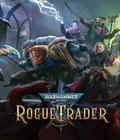
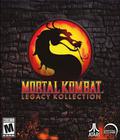
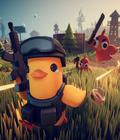
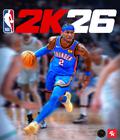
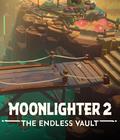
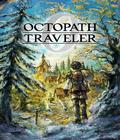
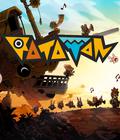
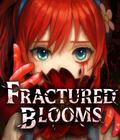

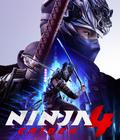 Ninja Gaiden 4 is the definitive ninja action/adventure where you embark on a cutting-edge adventure where legacy meets innovation in a high-octane blend of style and no-holds-barred combat.
Ninja Gaiden 4 is the definitive ninja action/adventure where you embark on a cutting-edge adventure where legacy meets innovation in a high-octane blend of style and no-holds-barred combat.














